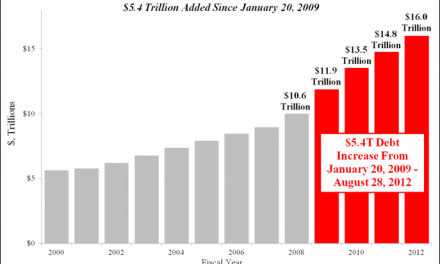By Nilus Mattive
May 01, 2012 – In February, I explained why the Middle Class Tax relief and Job Creation Act of 2010 simply compounded Social Security’s big-picture problems. And now just two months later the program’s Trustees have released their latest annual report.
The conclusion in a nutshell? Surprise, surprise:
“The Social Security outlook has worsened significantly relative to last year’s report.”
Let me elaborate on that a bit …
Last year the Trustees were saying the program’s trust funds would run out in 2036, causing a 25 percent reduction in payments from that point forward.
Now the number in the 2012 report is predicting exhaustion three years sooner than that — which continues the pattern of consistently walking down these estimates year after year.
That’s partly because the underlying math is problematic due to long-term forces and false assumptions — including life expectancies, demographics, and the fact that the Trustees are now calling for lower wage growth going forward.
But again, it’s also because lawmakers are making things worse not better!
Just look at revenues going into the program:
In 2011, inflows were $148 billion less than outflows and administrative costs, with $103 billion of that attributable to the aforementioned payroll tax cut …
And for 2012, the Trustees see an even bigger annual shortfall of $165 billion … with $112 billion of that from the extension of the payroll cuts!
What would it take to “fix” things? According to the Trustees, we could:
- Increase the existing regular Social Security tax rate (in other words, what the rate would be without the current payroll tax cut) by another 2.61 percentage points …
- Immediately reduce benefit payments by 16.2 percent …
- Or find an appropriate mix of each of these two adjustments.
Obviously there are other alternatives, too.
For example, Washington could simply raise — or completely eliminate — the current cap on wages that are subject to Social Security taxes.
And if I were a betting man, I would wager that WILL be the first thing they try to do.
After all, it’s politically palatable for the majority of voters … especially given all the “99 percent vs. 1 percent” rhetoric making the rounds.
Moreover, the case that this cap has not kept pace with inflation will be very easy to make.
No, I am NOT saying these arguments actually make sense. In fact, I consider them specious for a lot of reasons. But I’ve learned that neither Washington nor American voters care a whole lot about what I think.
And, hey, it’s also very easy to argue that Medicare taxes already apply to ALL of a worker’s income … which practically makes this an airtight case to the average voter.
Except for the fact that Medicare is in even worse condition than Social Security, of course!
Again, according to the Trustees’ report, Medicare will start having payment problems by 2024, when it will only be able to hand out 87 percent of the benefits currently being promised.
So what would it take to right this program?
The current 2.9 percent tax levied on all wages would have to go up to 4.25 percent.
Moreover, that assumes a scheduled cut in Medicare payments is going to happen despite Congress’ propensity to not let it happen.
And it’s also based on the belief that the new healthcare reform law will remain in place. Speaking of which, if that law didn’t exist Medicare would only be able to pay full promised benefits until 2016!
So if you’re starting to get the impression that there are many “ifs” surrounding these issues, you’re right.
Obviously none of this is good news for any of us. And because it’s an election year, I expect politicians will try to steer as far away from these issues as possible through November.
But at some point, they’re going to have to directly acknowledge what is already very clear to the rest of us — that the current math related to our country’s entitlement programs is simply not adding up.
Best wishes,
Nilus
Weiss Research
P.S. I sound like a broken record but this mess is exactly why you need to continue working hard to build your own inflation-fighting retirement nest egg.






